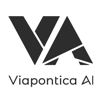Custom Software Dev for Quantitative Foresight Company
- Custom Software Development
- $10,000 to $49,999
- Jan. - Mar. 2022
"Viapontica AI provided technical expertise and contributed intellectually to the project."
- Financial services
- Paris, France
- 11-50 Employees
- Online Review
- Verified
Viapontica AI provided data engineering support for a quantitative foresight company. This involved data ingestion and pre-processing, data transformation, data enrichment, and data analytics.
Viapontica AI's support drove efficiencies, accelerating the project by 3–4 months. The solution-oriented team exhibited a keen understanding of the client's problem and contributed insightful ideas to further streamline the process. They were adaptable, timely, and technically proficient.

